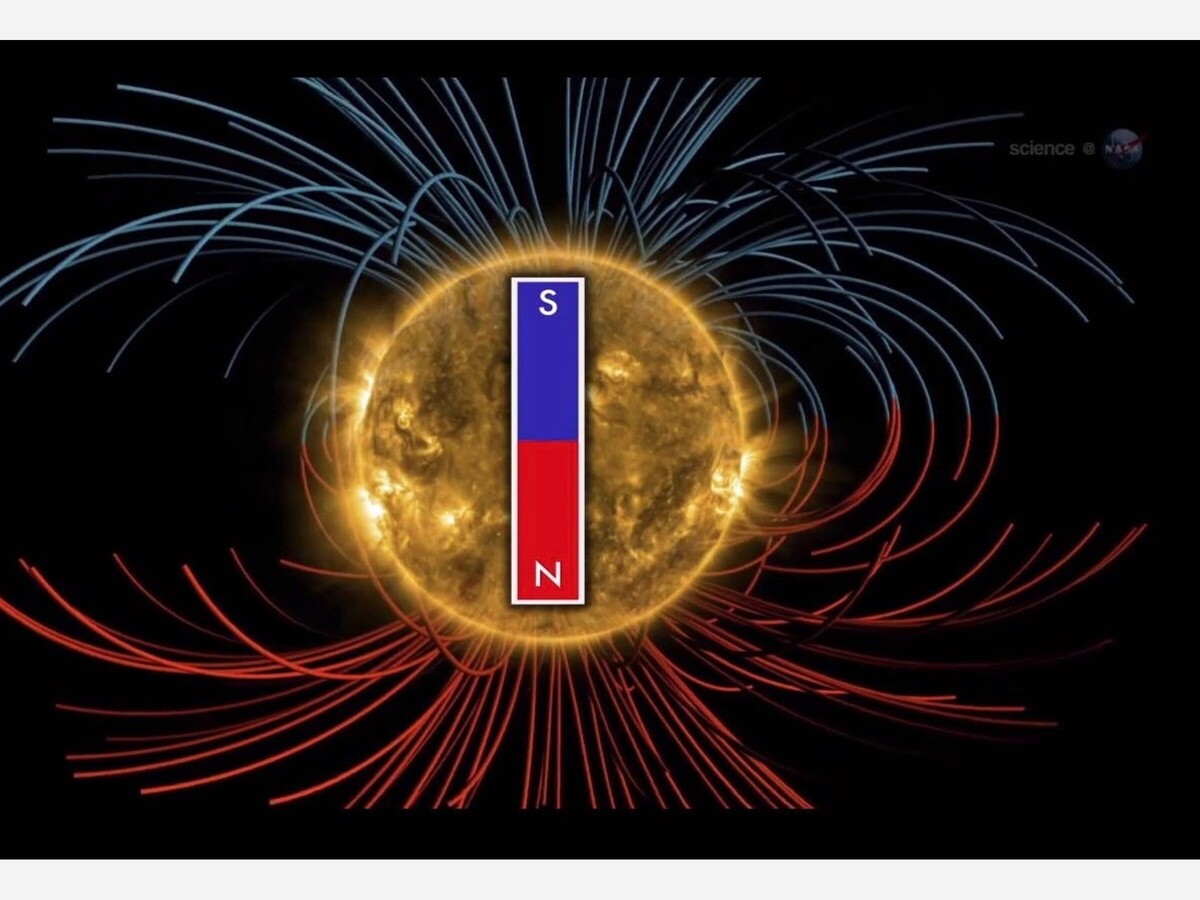Image


Every 11 years or so, our Sun undergoes a fascinating transformation: its magnetic poles switch places. This "polar field reversal" is a fundamental part of the Sun's activity cycle, and while it may sound dramatic, it's actually a regular occurrence that has been happening for billions of years. But what exactly does this pole-switching entail, and what are the potential effects on Earth and our technology?
Imagine the Sun's magnetic field as a giant bar magnet, with invisible lines of force flowing from one pole to the other. During a reversal, these lines get tangled and twisted, eventually emerging with the opposite polarity. The north pole becomes the south, and vice versa. This dance of magnetism is thought to be driven by deep-seated churning within the Sun's interior, where hot plasma constantly moves and reshapes.
The Sun's pole reversal is a natural process, and scientists don't expect it to cause any major disruptions to life on Earth. However, it can influence space weather, which is the ever-changing flow of charged particles and radiation from the Sun that bathes our planet. During a reversal, the Sun's magnetic field weakens and becomes more chaotic, which can lead to an increase in solar flares, coronal mass ejections (CMEs), and geomagnetic storms.
These events can have varying impacts on Earth. Solar flares can disrupt radio communications and damage satellites. CMEs, which are giant bubbles of plasma ejected from the Sun, can trigger geomagnetic storms that cause power grid outages and auroras. While the effects are usually short-lived, they can be significant, especially for technological infrastructure.
Scientists are constantly monitoring the Sun's activity, including the upcoming pole reversal, which is expected to occur sometime between 2023 and 2025. By studying the Sun's magnetic field and tracking solar flares and CMEs, researchers can help us prepare for and mitigate the potential impacts of space weather events.
The Sun's pole reversal is a reminder of the dynamic nature of our solar system. While it may not be cause for immediate alarm, understanding this natural phenomenon is crucial for protecting our technology and ensuring the continued well-being of our planet in the face of the Sun's ever-changing moods.
Image from space.com